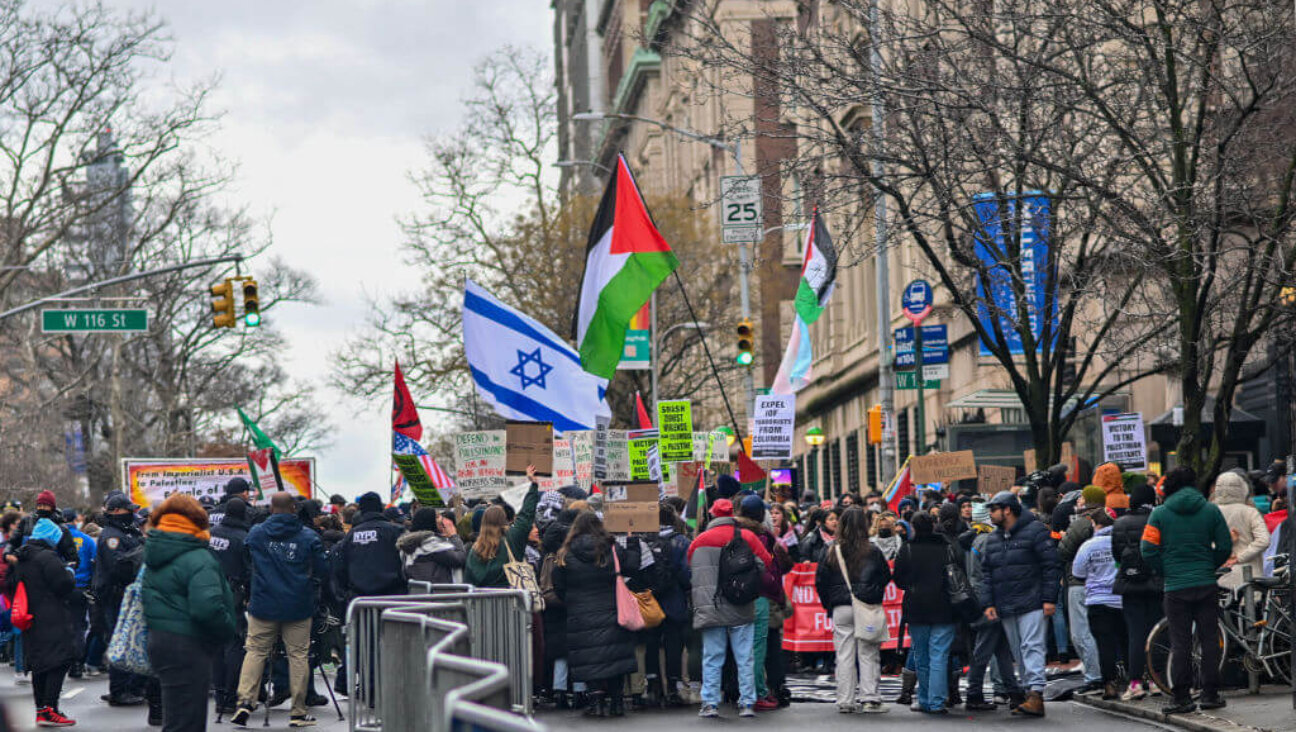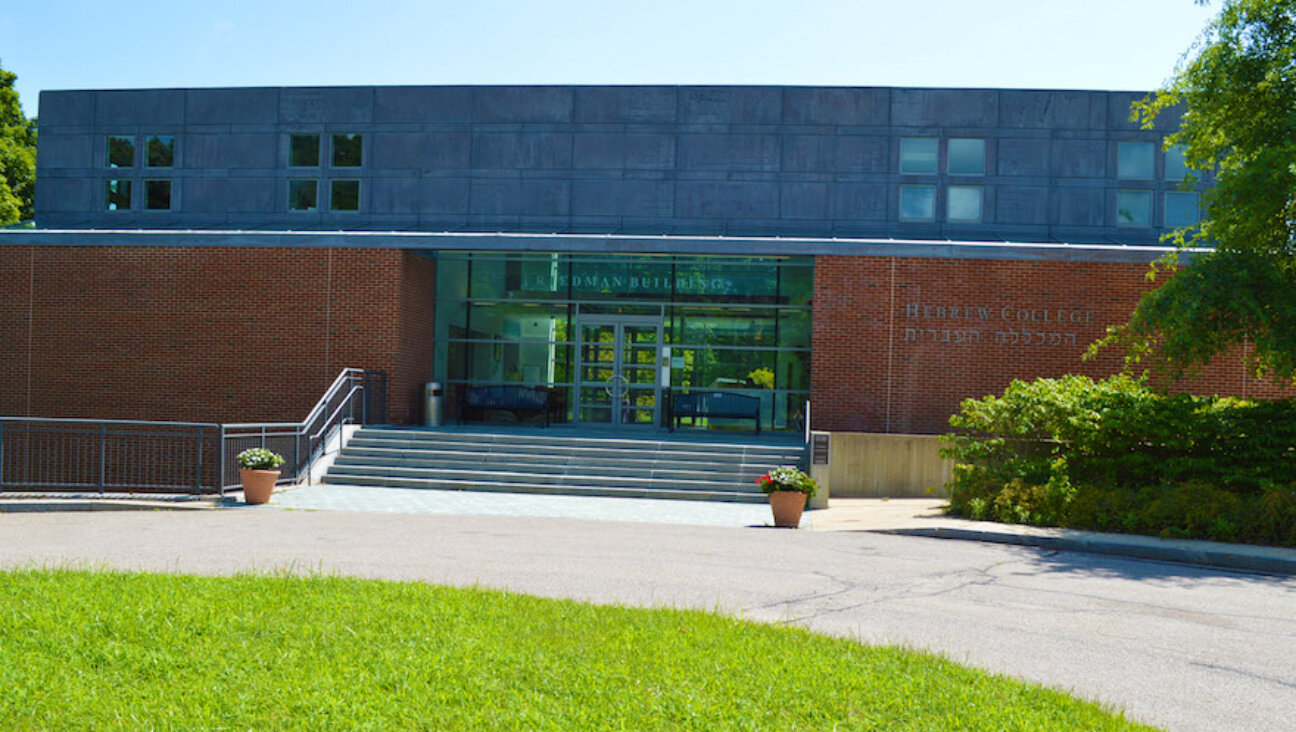May 13, 2005
The Case for Bolton
The Senate Foreign Relations Committee has earned a reputation for being tough on nominees for the post of America’s representative to the United Nations (“Senate Probes Bolton’s Pro-Israel Efforts,” May 6).
Richard Holbrooke’s nomination was held up because Holbrooke was said to be too “arrogant” and “nasty” for the U.N. post. He was eventually confirmed, and he served with distinction. He reached out both to the African delegates and to Senator Jesse Helms. He arranged for American dues to be lowered. He stood up for the United States and for beleaguered Israel. And when Hadassah ran into difficulties after applying for consultative status, he helped to get it through.
John Negroponte’s nomination was held up for months. During the time he served as American ambassador to Honduras, he was accused by the American ambassador in Nicaragua of hosting a luncheon for Nicaraguan insurgents. He was confirmed after the September 11, 2001, terrorist attacks, and he also did an excellent job.
He was the father of the Negroponte Doctrine, which stated that the United States no longer would permit the adoption of resolutions in the U.N. Security Council that were biased against Israel. He went on to become ambassador to Iraq and recently was sworn in as the first national director of intelligence.
Now, John Bolton’s nomination is also being held up by the Senate Foreign Relations Committee. Bolton, too, has been accused of not having the right temperament for the job and of not being a dutiful State Department diplomat.
His detractors divert attention from the fact that as assistant secretary of state for international organization affairs, he did more to reform the U.N. and to enhance America’s reputation there than any of his predecessors. They never mention that after leaving office, Bolton cared so much about the U.N. that he continued to write and lecture about it and served the U.N. pro bono between 1997 and 2000, working on the conflict in the Western Sahara.
The repeal of the Zionism-equals-racism libel, which could not have happened without him, was a project that I personally know he worked on not just in 1991 but throughout his four-year tenure in the Bureau of International Organization Affairs.
In his sworn testimony of April 11, Bolton assured the members of the Senate Foreign Relations Committee — “the American people, and potential future colleagues at the United Nations” — that, if confirmed, he would “strive to work with all interested parties to build a stronger and more effective United Nations.”
No other nominee for the U.N. position has brought to the post such a strong background in U.N. affairs or commitment to repair the world body. Because of his experience with the U.N., Bolton spoke out for U.N. reform way before most other American officials. For this he has been condemned. He should be applauded.
Harris Schoenberg
Past Secretary
United States Commission on Improving the Effectiveness of the United Nations
New York, N.Y.
Centers Missing From List of Shoah Museums
The Forward’s review of Holocaust memorial centers around the world was well done and moving (“In Memoriam,” April 29). I was honored to be credited with so much influence on the United States Holocaust Memorial Museum, although I publicly acknowledge that other people had an equal or greater role in shaping the project.
While the Forward understandably could not cover all institutions, I believe that a list of world-class Holocaust memorial centers should include New York’s Museum of Jewish Heritage: A Living Memorial to the Holocaust. I write with the belief that many people do not fully understand the distinctive role it plays in Holocaust memory.
Key people were involved with the creation of Holocaust museums in both Washington and New York. They faced opposition from influential people who argued that one center was enough. Given that Washington had won the imprimatur of the American government, what need was there for a privately sponsored Jewish memorial institution in New York?
The winning argument was that a pluralist approach was needed, with a proper division of labor. Washington would present the more “universalist” story. It would be more human rights and politics centered and “less Jewish” in that it was sponsored by the American government on land sacred to the American people. Washington would build a specialty in research and archives, in conjunction with the National Archives. It was best suited to work with the American public-educational systems. Washington would have the advantage in dealing with foreign governments and in allowing various needed formal agreements into them.
If Washington put the Holocaust before the American government leadership, then a museum in New York was needed to put it before the international community and the United Nations. New York, the largest Jewish community in the world and the largest cluster of Holocaust survivors, needed a center that would speak to that fact. New York was planned to offer the more particularist Jewish narrative, albeit with universal implications — incorporating the entire heritage and the Holocaust within that framework.
New York would be a more Jewish turf, albeit open and drawing all people. Washington symbolically was closed only on Yom Kippur; New York honors the Sabbath and other Jewish rituals. New York was an insurance policy — a center where Jewishness and integrity of Jewish narrative would never be at risk. New York would relate to the tri-state public and private schools and to the largest cluster of day schools in the world.
In the end, Washington created a stunning, overwhelming narrative of the destruction, leavened with heroism, righteous gentiles and a postwar recovery. New York created a moving, comprehensive narrative of Jewish life and heritage with a powerful presentation of the Holocaust, concluding with the renewal of life in America and the State of Israel. These are two very different but very legitimate experiences of encounter with the Holocaust.
All my sweeping generalizations in this letter are for shorthand purposes; they should be nuanced by the reader. In the end, I believe that both institutions are extraordinary. Both are speaking to distinctive audiences. Both are reaching many people who would otherwise not have been reached if only one of them existed. The two institutions cooperate and work with each other.
Washington is more visible and reaching more people, so the Forward had every right to prioritize it. However, New York plays such a vital role that I would like to put it before the Forward’s readership.
Irving Greenberg
President
Jewish Life Network/Steinhardt Foundation
New York, N.Y.
It is disappointing and somewhat ironic that your presentation of Holocaust museums and memorials around the world did not include the Ghetto Fighters’ Museum and Western Galilee’s Yad Layeled Children’s Museum and Memorial.
Along with the distinction of being the world’s first Holocaust museum, the Ghetto Fighters’ Museum, built in 1949 by survivors, houses one of the world’s most comprehensive archives and Holocaust art collections and uniquely focuses on Jewish resistance. Equally noteworthy is that its campus includes one of the world’s foremost institutes for Arab-Jewish Holocaust education.
The Center for Humanistic Education joins young adults in Jewish, Arab and Druze communities in year-round multicultural seminars and programs for graduates of the center, extending their relationships into the future. The center’s graduates have gone on to receive scholarships at prestigious American universities and have brought their humanitarian lessons to communities throughout the United States.
The leading educational program of The Yad Layeled Children’s Museum — which was built in 1995 by The Workmen’s Circle — and the American Friends of the Ghetto Fighters’ Museum is an Internet-based, international book-sharing project. The proj- ect, which, during the past 10 years, has paired more than 25,000 American and Israeli children in middle schools and high schools, provides age-appropriate Holocaust education to multiethnic populations in parochial schools, public schools and Jewish day schools across the United States.
Marcy Rubin
Communications Director
American Friends of the Ghetto Fighters’ Museum
Teaneck, N.J.
Provocative Ad Raises An Important Question
The anti-disengagement advertisement by the Stop the Expulsion group in the April 22 issue was certainly provocative in its use of Holocaust imagery, but also right on target (“Warsaw 1943 or Gaza 2005?”). If some find the ad hurtful, perhaps that is because it hits so close to home, and we really are uncomfortable with the notion of Jewish soldiers deporting other Jews.
Indeed, it is hard not to be reminded of past persecutions. It is also hard to argue with the idea that Jews should be allowed to live wherever they choose.
I suspect that one reason for the use of Holocaust imagery was to shock a Jewish establishment that seems all too accepting, even supportive, of the planned deportation of Jews from parts of Israel. The Forward deserves credit for running the ad and allowing the expression of alternative, if controversial, viewpoints.
Shame on the Anti-Defamation League for criticizing the Forward’s decision in a May 6 letter to the editor. Inexplicably, the ADL is offended by the ad but not by the deportation of Jews. Of all organizations, the ADL should realize that the deportation of one Jew anywhere denigrates all Jews everywhere — and perhaps, on its most fundamental level, that is the problem with disengagement.
Milton Gottlieb
North Miami Beach, Fla.

I hope you appreciated this article. Before you go, I’d like to ask you to please support the Forward’s award-winning journalism this Passover.
In this age of misinformation, our work is needed like never before. We report on the news that matters most to American Jews, driven by truth, not ideology.
At a time when newsrooms are closing or cutting back, the Forward has removed its paywall. That means for the first time in our 126-year history, Forward journalism is free to everyone, everywhere. With an ongoing war, rising antisemitism, and a flood of disinformation that may affect the upcoming election, we believe that free and open access to Jewish journalism is imperative.
Readers like you make it all possible. Right now, we’re in the middle of our Passover Pledge Drive and we still need 300 people to step up and make a gift to sustain our trustworthy, independent journalism.
Make a gift of any size and become a Forward member today. You’ll support our mission to tell the American Jewish story fully and fairly.
— Rachel Fishman Feddersen, Publisher and CEO
Join our mission to tell the Jewish story fully and fairly.
Only 300 more gifts needed by April 30
























